Silynx Communications offers a unique in-ear headset system unlike any on the market today. Choosing the right Silynx headset can seem daunting, and there are so many options available to you. With the sheer number of options available, it's really important to do your homework before you commit.
In this guide, we'll look at all the Silynx CLARUS systems and point you in the right direction regarding which system makes the most sense to you.
In-Ear Technology vs Bone Conduction
Most in-ear headsets like Invisio, use bone conduction that requires vibrations from your tragus (inside part of your ear) to communicate while Silynx uses In-Ear Technology that requires no contact with the tragus to communicate. Not everyone has a strong tragus so if the in-ear headset is not fitted right it won’t pick up the vibrations in your voice, leaving you without clear communication. As a competitive advantage, Silynx designed the In-Ear Microphone which picks up your voice a lot easier than bone conduction.
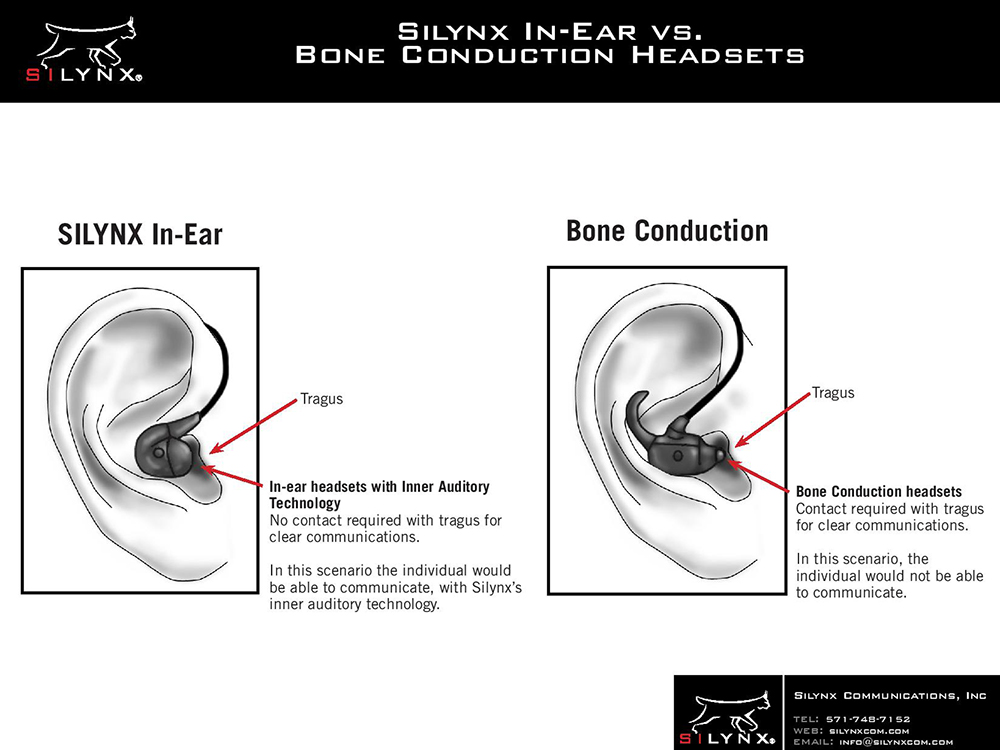
Features in all Clarus Systems
Silynx headset systems are broken down into three main parts. The control box (PTT), the in-ear headset, and the radio lead cable adapter (available in select models). The control box houses the push to talk for left and right hands and connects the in-ear headset to your communication device.
All of the Clarus In-Ear Systems include hearing protection with a noise reduction rating of 25 dB, situational awareness, and hear thru technology for impulse noise and sound localization. Protection against impulse noise and steady-state noise protects shooters from loud gunfire and noise. Silynx understands the need to be constantly aware of your surroundings, especially when wearing hearing protection, so the systems incorporate situational awareness that filters good noise through while keeping loud noise out.
Lastly, on the Clarus, XPR, and FX2 control box, there is volume control that lets you turn up or down the volume of ambient sound around you based on your preference.
Differences Between the Silynx CLARUS Systems
We’ll discuss the main differences between the four Clarus systems including the,
- Clarus
- Clarus XPR
- Clarus FX2
- Clarus Pro
For Combat & Military
Clarus System
The Clarus is a small and lightweight system designed for tactical operations. This system is offered in a modular configuration that lets you easily remove the control box from the in-ear headset. The Clarus supports a single radio, smartphone, intercom system, or dual radios with a dual comm splitter. This system offers an optional boom microphone in place of its in-ear microphone if users prefer to communicate through the attachment instead.
This system is great for military users looking for a connection to 1 to 2 communication devices (tactical radio, intercom system, or smartphone) at once.
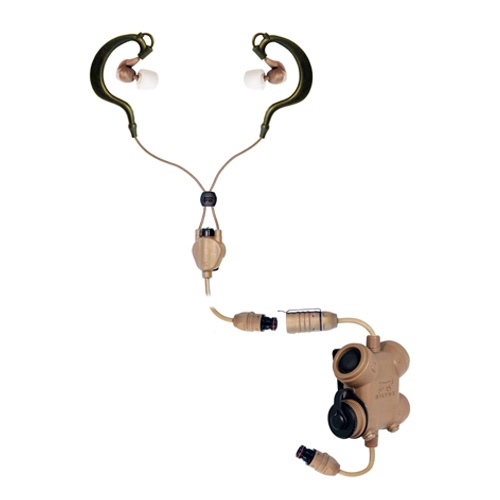
Clarus XPR System
The Clarus XPR headset can either be fixed or removable (modular) from the control box if you want to be able to disconnect the in-ear headset from the control box.
This system supports 1 radio or both a radio and a smartphone. Lastly, as an option, the Clarus XPR can be used with a single-sided headset for one ear instead of two. This is recommended for situations where no hearing protection is required.
The Clarus XPR is great for users wanting a cost effective, versatile choice. This option would also be a good for industrial workers trying to communicate with PPE and in high noise factories and plants.
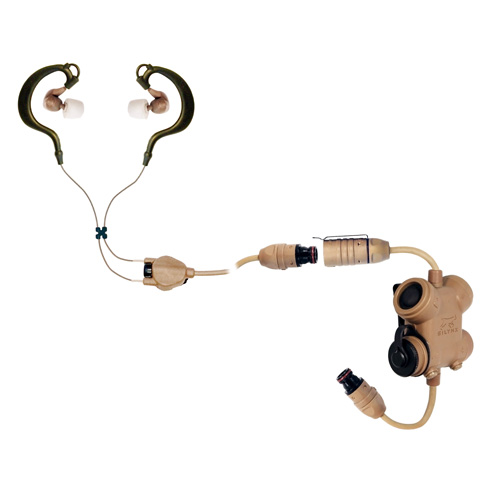
Law Enforcement
Clarus FX2
The Clarus FX2 was designed for plug-in play simplicity for connection to the radio right out of the box. This system connects to a single radio and has support for most LE radios including Motorola, ICOM, Harris, and Kenwood. A downside to this system is the radio lead is permanent to the control box so if you do change radios in the future, you’ll need to purchase a new system compatible with that radio. If users prefer a single ear instead of a dual ear, a single-sided in-ear headset is available.
This system is good for organizations on a budget looking for hearing protection and reliable single radio communication. The FX2 is sold for around $550.
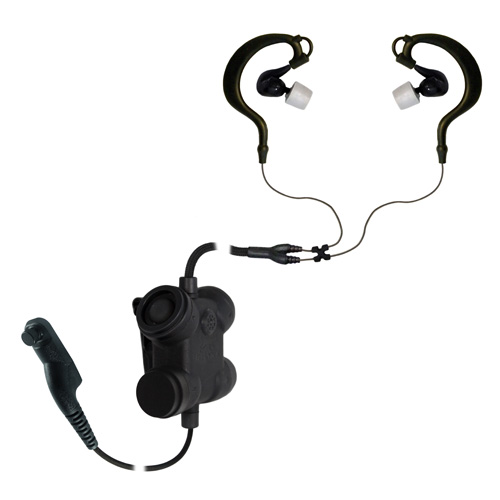
For Hunters and Shooters
Clarus Pro System
The Clarus Pro is great for hunters and shooters looking for hearing protection and situational awareness. This system does not connect to a two-way radio or have push-to-talk buttons for comms capabilities. Instead, it can be paired with a smartphone cable adapter for connection to a cellphone/mobile.
You’ll get around 100 hours of battery life and its ruggedized design protect it against rain, dirt, mud, shock, and vibration.
If you are a recreational shooter or gun range instructor who isn’t looking to utilize a radio, the Clarus Pro is the right solution for you coming in at just above $300.
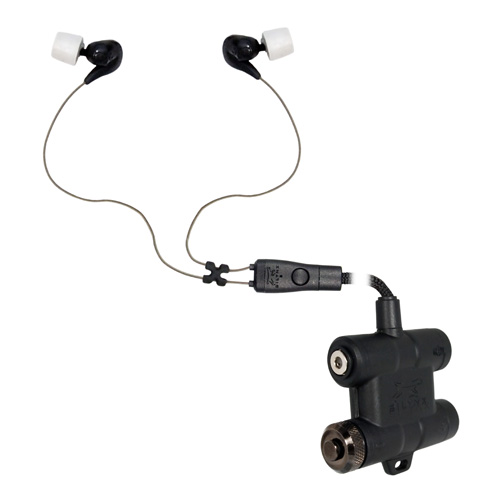
Silynx In-Ear Headset Systems Comparison Chart

Silynx FORTIS:
Another great in-ear headset option from Silynx that is outside of the Clarus line is the Silynx Fortis In-Ear Headset. This headset comes in black or tan and is made for covert communications.
This headset is the smallest and lightest in-ear headset on the market today. Not only does this achievement make it great for covert operations, but it is also comfortable for longer wear.
The headset features external microphones for situational awareness and internal speakers for clear listening. The electronics built into the Fortis headset are submersible and the cables are ruggedized with aramid fiber reinforcement. These features work together to make an in-ear headset that can persist in challenging environments.
The Silynx Fortis In-Ear Headset will cost you a minimum investment of $570.
How We Can Help
Looking to buy a Silynx In-Ear Headset System or don't know where to start? First Source Wireless is an authorized dealer of Silynx Communications products. Let us help you find the right solution for you. Talk to our team today at 800-991-4569, sales@firstsourcewireless.com or shop our collection now.

